





Buckthorn
Application instruction:
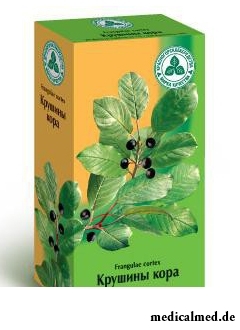 The buckthorn is the plant familiar since the childhood to each inhabitant of middle latitudes under the name "wolf berries", however, wolf berries call and still some other plants of a similar look. One more name under which it is widely known – a buckthorn though correctly a buckthorn to call one type of a buckthorn – a buckthorn laxative, different from other types existence of prickles on tops of branches. The buckthorn grows in a species of bushes or small trees, in coppices, on edges, on the bank of the rivers and lakes, has a wide area of dwelling – from North Africa and Asia practically to the Polar circle, is widespread in Europe and North America where it was delivered from Europe in the decorative purposes. Bark dark, leaves glossy, oval form. The plant plentifully from the middle of May on June in ordinary-looking yellow colors, on site which berries stone fruit appear later, in the beginning green, later red blossoms, in the middle of August they keep up, and become black.
The buckthorn is the plant familiar since the childhood to each inhabitant of middle latitudes under the name "wolf berries", however, wolf berries call and still some other plants of a similar look. One more name under which it is widely known – a buckthorn though correctly a buckthorn to call one type of a buckthorn – a buckthorn laxative, different from other types existence of prickles on tops of branches. The buckthorn grows in a species of bushes or small trees, in coppices, on edges, on the bank of the rivers and lakes, has a wide area of dwelling – from North Africa and Asia practically to the Polar circle, is widespread in Europe and North America where it was delivered from Europe in the decorative purposes. Bark dark, leaves glossy, oval form. The plant plentifully from the middle of May on June in ordinary-looking yellow colors, on site which berries stone fruit appear later, in the beginning green, later red blossoms, in the middle of August they keep up, and become black.
Properties of a buckthorn
Use of a buckthorn is very broad, this useful and beautiful plant, thus unpretentious. In the decorative purposes use both a bush, and its wood, small yellow flowers are melliferous, from seeds receive the oil containing a large amount of pitches, glycosides, dyes and succinic acid, this oil finds application both in medicine, and in paint and varnish industry.
In medicine berries of a buckthorn and its bark, and both in traditional, and in national are used. Both bark and berries have laxative properties. However it is necessary to use this plant with big accuracy, strictly adhering to recommendations as it contains the substances which are strongly irritating a mucous membrane of a digestive tract and by that capable to cause serious poisoning.
In traditional medicine use of a buckthorn wider, not only as laxative that is quite justified it by properties. For example, its antibacterial action is known, and in experimental conditions existence of antiviral effect was proved – the water extract from berries of a buckthorn suppressed replication of a virus of herpes.
Chemical composition
As a part of a buckthorn laxative, or a buckthorn, the following chemical compounds contain:
- Anthraquinones, including фрагуларозид which causes vomiting. At storage this substance is exposed to fermentation, turning into safe glycofrangulin. Process of oxidation takes about a year, but can be accelerated by temperature processing. That is why it is impossible to use fresh-gathered bark and berries of a buckthorn but only at least a year later after collecting, or specially processed as those that go on pharmaceutical sale;
- Tannins;
- Alkaloids;
- Apple and amber acids;
- Simple and difficult sugar (gum, pectins);
- Vitamin C;
- Essential oils – in bark they contain in a small amount, and in berries in considerable.
Use of a buckthorn in medicine
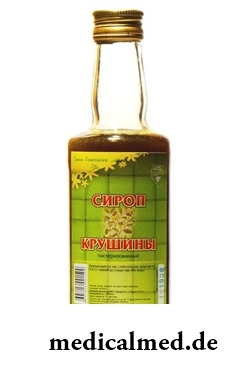 In medicine the buckthorn laxative generally finds application, though other types can be also used in the medical purposes. The main objective of use of this plant is visible from the name, this laxative action. As laxative a buckthorn works very softly, the effect occurs in 10-14 hours after reception that needs to be considered at use, correctly timing. Use the dried-up bark or berries of a plant, at buckthorn bark the laxative effect is expressed stronger, than at berries. As laxative the buckthorn in official medicine is appointed at an intestines atony, hemorrhoids, perianal cracks, a helminthic invasion, colitis.
In medicine the buckthorn laxative generally finds application, though other types can be also used in the medical purposes. The main objective of use of this plant is visible from the name, this laxative action. As laxative a buckthorn works very softly, the effect occurs in 10-14 hours after reception that needs to be considered at use, correctly timing. Use the dried-up bark or berries of a plant, at buckthorn bark the laxative effect is expressed stronger, than at berries. As laxative the buckthorn in official medicine is appointed at an intestines atony, hemorrhoids, perianal cracks, a helminthic invasion, colitis.
Specialists are inclined to consider that action of this plant on intestines rather regulating, than just laxative as the tannins which are contained in it at ponosa have too medical effect and therefore use of a buckthorn is justified at all dysfunctions of intestines: locks, ponosa and their alternation.
Berries of a buckthorn use at locks of chronic atonic character, ponosa, plentiful menstrual bleedings. However their main use – as diuretic at hypostases, ascites, including the ascites caused by cirrhosis and heart failure. Use of fresh berries, but no more than 15 pieces for reception is allowed, otherwise they cause vomiting and provoke a stomach inflammation. Not to risk, better nevertheless to use the dried-up and kept 2-3 years of berry. By the way, as vomitive traditional medicine orders a buckthorn.
Also in nonconventional medicine it is used at gastritis, stomach ulcer and a duodenum, diseases of a liver, heart failure, persistent cough. Spirit tincture of berries of a buckthorn is applied to grindings at rheumatism and radiculitis, and water broth at skin diseases (the eczemas and inflammations caused by a pustulous infection such as furuncles, anthrax, purulent wounds).
Dosage forms and routes of administration
The buckthorn is usually applied in the form of infusions and broths, occasionally in the form of forty-degree spirit tincture, is even more rare in the natural form – no more than 10-15 fresh berries on an empty stomach, or dry, ground in powder. Laxative make syrup which is allowed for use in children's practice of a buckthorn. Sometimes in literature it is possible to meet recommendations about use of fresh juice from buckthorn berries, however doctors consider that fresh or even tinned juice has too high concentration of active connections, and can cause undesirable reactions from an organism (vomiting, a diarrhea, a stomach ache and intestines).
The buckthorn goes on sale in the form of syrup, the dried-up and crushed bark, and also as a part of pharmaceutical collecting.
For preparation of infusion 10 of of fruits of a buckthorn of 8 hours insist on a glass of boiled water. Independently to prepare syrup, mix equal parts of water infusion of a buckthorn and sugar.
Broth of bark of a buckthorn prepares as follows: 20 g of the dried-up and crushed bark fill in with two glasses of cold water, cook on small fire within 25-30 minutes. Allow to cool down, accept on 1 tablespoon before going to bed (that in the morning to cause ease).
Recipe of infusion of bark of a buckthorn: to fill in 10 g of the dry crushed bark with 2 glasses of water, to allow to infuse within 8-10 hours.
Spirit tincture: the buckthorn bark which is previously dried up and crushed is filled in with 40-degree alcohol, at the rate of 1:1, according to the same recipe spirit buckthorn berries tincture is made.
Contraindications to use of a buckthorn
At the correct use the buckthorn of contraindications has almost no, however it is necessary to watch surely its dosage and that the plant not less than biennial prescription of collecting was used. A contraindication to a buckthorn are the following states: malignant tumors of digestive tract, disease Krone, early children's age, pregnancy, lactation, uterine bleedings.
Contraindication to a buckthorn is also its too frequent use as, as well as other laxatives, it causes accustoming, and afterwards independent bowel emptying becomes problematic.
Name of drug
Price
Drugstore
Buckthorn bark pack of 50 g, Krasnogorskleksredstva (Mosk.obl)
63 rub.
 Network of the Moscow drugstores of IFC
Network of the Moscow drugstores of IFCBuckthorn bark ф / pack ice 1.5g No. 20, Krasnogorskleksredstva (Mosk.obl)
67 rub.
 Network of the Moscow drugstores of IFC
Network of the Moscow drugstores of IFCMany drugs initially moved ahead in the market as drugs. Heroin, for example, was initially brought to the market as children's cough medicine. And cocaine was recommended by doctors as anesthesia and as the means increasing endurance.

Radiological methods of a research are applied in medicine more than hundred years, and thanks to them millions of lives were saved. In m...
Section: Articles about health
Cold, puffiness of a nose, itch, the watering eyes - characteristic symptoms of the allergic rhinitis resulting from hit of allergens (pollen, house dust, hair of animals, etc.) on a mucous membrane of a nose. Unpleasant feelings often deliver беспоко...
Section: Articles about health
Women quite often suffer from complexes concerning the sizes of the bust. Strangely enough, not too modest, and excessively curvy shapes become the reason of sincere discomfort sometimes. Except psychological problems, the big bust sometimes creates also quite notable malfunctions with health: his owner can feel muscular dorsodynias, feeling of constant fatigue and difficulty of breath. Over time excess loading leads to development of diseases позвоночн...
Section: Articles about health
Aging — natural and inevitable process. Over time our skin loses elasticity, on it saggings, a face form теря are formed...
Section: Articles about health
It would seem, to buy drugs in Moscow does not make a problem – a drugstore, and not one, is available for each resident of the capital within walking distance. And, nevertheless, Internet drugstores become more popular – what it is possible to explain such phenomenon with? Actually m reasons...
Section: Articles about health
Healthy lifestyle today in fashion, and many parents think of that the child from the early childhood played sports. Trainings will help it to become strong and hardy, will improve coordination of movements, and also will exert positive impact on mentality: it will become more collected and purposeful....
Section: Articles about health
Epilepsy is one of widespread neurologic diseases. To parents, whose children suffer from this illness, it is necessary...
Section: Articles about health
Life of the modern child is extremely active and difficult. Information strain which is experienced by the school student and did not dream pupils of last times. Careful parents, wishing well to the children, will organize a set of additional classes in circles, sports...
Section: Articles about health
The thought that the mass of their body is too big at least once in life visits from 80 to 95% of women. Many women are so obsessed with this idea that constantly try all new and new ways of weight reduction. A considerable part of these techniques is ineffective, and some in general are unsafe for health....
Section: Articles about health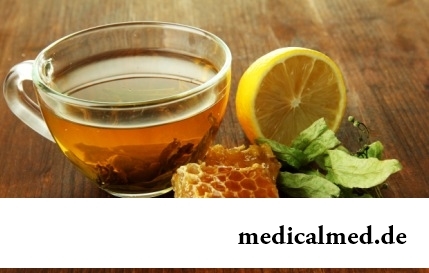
Cold – a state known to everyone which is followed by cold, cough, high temperature, a pharyngalgia. Often перво...
Section: Articles about health
Olive oil – the product capable to make a powerful contribution to health of the person if it includes it in the diet. The rich vitamin composition of oil does it by a product number one from many diseases including from deadly. Only two tablespoons...
Section: Articles about health
The main role in development of a peptic ulcer of a stomach and duodenum the bacterium Helikobakter plays pilor. Activity and the strengthened reproduction of this microorganism lead to weakening of protection of mucous membranes and their erosive damage. Displays of an illness seriously reduce quality of life: patients regularly test attacks of severe pain, heartburn, nausea. On this background also psychoemotional malfunctions develop: a kidney-vetch, as a rule, shows an acrimony, ча...
Section: Articles about health
The climax, or menopause is the normal process of the termination of genital function of the woman which is followed serious hormonal...
Section: Articles about health
Impossibility to conceive the child – a trouble of many Russian families. During quite long time was considered that main "culprits" of troubles such are women. Modern physicians claim that the situation is different: about a half of failures at...
Section: Articles about health
Bathing in broths of medical flowers and plants (phytobathtub) was eurysynusic since Cleopatra who is a good judge in all that concerns beauty and health. And today phytobathtubs is the simple and available means allowing not only to remove nervous tension, but also to recover from many diseases. Grass bathtubs at treatment of cold, osteochondrosis, radiculitis, skin diseases, and also diseases of urinary tract and vessels are especially effective....
Section: Articles about health
Practically each person is familiar with the annoying, pulling, unscrewing pains caused by overcooling of muscles of a back. In некото...
Section: Articles about health
The depression not without reason is considered one their main troubles of our century: for scientific and technical progress, acceleration of rate of life and a surplus of information of people it is forced to pay with stresses, negative emotions and weakening of protective forces of an organism. As a result ш...
Section: Articles about health
Water with a lemon - idle time in preparation drink which supporters of a healthy lifestyle already managed to appreciate. Used in a warm look and on an empty stomach, it is one of the most useful prophylactics allowing to prevent tens of diseases and just to raise an organism tone. Especially effectively to use warm water with lemon juice after a serious illness, during a season of the colds, and also to children, old men and pregnant women which do not have contraindications...
Section: Articles about health
Scientists always aimed to offer fundamental explanations for medical problems. Their theories formed the basis of modern methods is treated...
Section: Articles about health
The winter swimming in open reservoirs called in our country by "winter swimming" – officially recognized sport and one of the most extreme ways of a hardening of an organism. This occupation has an old story and adherents in many countries. Are annually carried out...
Section: Articles about health
All the known slogan "Protect Men!" arose not from scratch. In a sense, the nature created men much less adapted for vital disorders, than it seems at first sight. Statistically, men are ill more often, than women, have the majority of illnesses heavier and earlier die. The situation is aggravated with the fact that our fathers, husbands, brothers and sons are not always inclined to care for the health. Partly it happens because of unwillingness of t...
Section: Articles about health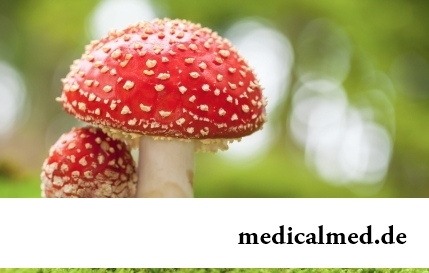
Mushrooms - the surprising inhabitants of our planet having a set of wonderful qualities. Thanks to one of them, a mold mushroom of Penici...
Section: Articles about health
Statistically, pathologies of a thyroid gland in the world more than 500 million people have. Failures in work of this body lead to heavy disbolism, development of heart diseases, vessels, a reproductive and nervous system. In hard cases excessive...
Section: Articles about health
Many parents of children at the age of 2-4 years face excessively whimsical behavior of the child. The kid exhausts constant crying and whims not only the parents, but also himself. In what the reasons of children's whims. And how to fight with them?...
Section: Slideshow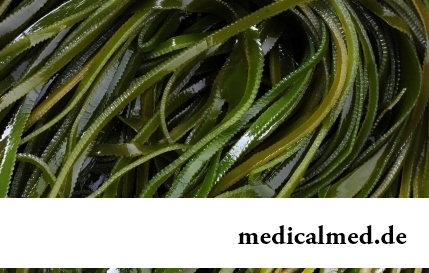
For residents of the countries of Southeast Asia various algas are an obligatory component of a daily diet. Their priest...
Section: Articles about health
Wood louse – the ordinary-looking unpretentious plant extended in all territory of our country. It quickly expands, and sometimes fills sites, bringing a lot of chagrin to gardeners. Perhaps, they would be upset less if knew that the wood louse is the prices...
Section: Articles about health
It is known that the person for 80% consists of water which participates in all processes of an organism. The person loses liquid daily – as a result of sweating, breath, an urination, and its insufficient completion due to various reasons can lead to dehydration of varying severity. Dehydration (dehydration) occurs already in case of loss of liquid in number of 1% of body weight and can result both in easy thirst, and by the death. In time to notice signs обезвож...
Section: Articles about health
